-
 Bitcoin
Bitcoin $106,437.2012
0.82% -
 Ethereum
Ethereum $2,442.5287
0.82% -
 Tether USDt
Tether USDt $1.0005
-0.02% -
 XRP
XRP $2.1812
-0.27% -
 BNB
BNB $645.1327
0.45% -
 Solana
Solana $146.2379
0.39% -
 USDC
USDC $0.9999
-0.01% -
 TRON
TRON $0.2751
0.92% -
 Dogecoin
Dogecoin $0.1662
-0.23% -
 Cardano
Cardano $0.5827
-1.22% -
 Hyperliquid
Hyperliquid $37.5225
0.04% -
 Bitcoin Cash
Bitcoin Cash $479.0877
4.02% -
 Sui
Sui $2.7846
-3.27% -
 Chainlink
Chainlink $13.3576
0.84% -
 UNUS SED LEO
UNUS SED LEO $9.0252
-1.20% -
 Stellar
Stellar $0.2455
-1.07% -
 Avalanche
Avalanche $18.0680
-1.81% -
 Toncoin
Toncoin $2.8948
-1.07% -
 Shiba Inu
Shiba Inu $0.0...01164
-1.65% -
 Litecoin
Litecoin $85.0637
-0.06% -
 Hedera
Hedera $0.1526
-0.89% -
 Monero
Monero $316.2941
0.78% -
 Ethena USDe
Ethena USDe $1.0003
-0.04% -
 Polkadot
Polkadot $3.4113
-1.87% -
 Dai
Dai $1.0000
-0.01% -
 Bitget Token
Bitget Token $4.4488
5.16% -
 Uniswap
Uniswap $7.1740
3.09% -
 Pi
Pi $0.5968
11.43% -
 Pepe
Pepe $0.0...01010
-0.65% -
 Aave
Aave $264.3189
0.40%
How does the currency circle fund make profits?
Currency circle funds profit via crypto investments, market making, margin trading, fees, proprietary trading, and staking/yield farming, offering potential returns while carrying inherent risks.
Jan 12, 2025 at 10:56 am
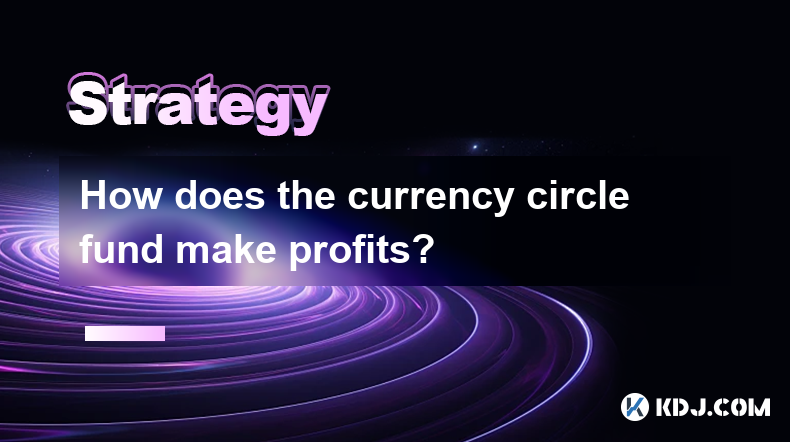
Key Points of the Article
How Currency Circle Funds Make Profits:
- Investing in Cryptocurrencies: Currency circle funds invest a significant portion of their assets in various cryptocurrencies, such as Bitcoin, Ethereum, and others. They profit from price appreciation or fluctuation in the value of these coins.
- Market Making: Currency circle funds provide liquidity to digital asset exchanges by acting as intermediaries between buyers and sellers during trading sessions. They profit by capturing the spread (the difference between the bid and ask prices) on every trade.
- Margin Trading: Currency circle funds extend loans to traders who wish to amplify their profits using leverage. The funds charge interest on these loans, which contributes to their revenue.
- Fees Collection: Currency circle funds may charge fees for various services, such as management fees, performance fees, or transaction fees. These fees provide a steady stream of income for the funds.
- Proprietary Trading: Some currency circle funds engage in proprietary trading, where they use advanced algorithmic models to generate returns through arbitrage, high-frequency trading, or other strategies.
- Staking and Yield Farming: Currency circle funds may participate in staking or yield farming, where they lock up cryptocurrencies to earn rewards or interest. These rewards contribute to the funds' profitability.
Comprehensive Explanation of Each Method
1. Investing in Cryptocurrencies:
Currency circle funds conduct thorough research and analysis to identify promising cryptocurrencies with strong potential for growth. They allocate a significant portion of their assets to these digital coins, hoping to capitalize on price appreciation or market volatility.
2. Market Making:
Currency circle funds play a vital role as market makers on digital asset exchanges. They quote both bid and ask prices for cryptocurrencies, providing liquidity to the markets and enabling smooth trading. By capturing the spread on trades, the funds secure a steady income.
3. Margin Trading:
Currency circle funds facilitate margin trading, where traders can borrow funds to increase their trading capital and leverage. The funds charge interest on these loans, which is a lucrative source of revenue. However, margin trading involves significant risks, as traders may incur losses greater than their initial investment.
4. Fees Collection:
Currency circle funds often charge a range of fees for their services. These fees can include management fees, which are levied for managing the fund's portfolio; performance fees, which are contingent on the fund's returns; and transaction fees, which cover the costs of trading.
5. Proprietary Trading:
Certain currency circle funds engage in proprietary trading strategies, using advanced algorithmic models and statistical analysis to predict market movements. They employ strategies such as arbitrage, high-frequency trading, and quantitative analysis to generate profits.
6. Staking and Yield Farming:
Staking and yield farming are popular methods for earning rewards or interest on cryptocurrencies. Currency circle funds may participate in these activities by locking up digital coins to earn rewards, which subsequently contribute to the funds' overall profitability.
FAQs
Q: What are the risks associated with investing in currency circle funds?
A: Currency circle funds carry inherent risks, including cryptocurrency price volatility, market fluctuations, regulatory uncertainties, and cyber threats.
Q: How do currency circle funds measure success?
A: Currency circle funds measure success primarily through their investment performance, which is often represented by their return on investment (ROI). Some funds also assess performance based on risk-adjusted measures, such as the Sharpe ratio.
Q: Are currency circle funds regulated?
A: Regulations governing currency circle funds vary across jurisdictions. Some regions have comprehensive regulations, while others have limited or no regulatory frameworks.
Disclaimer:info@kdj.com
The information provided is not trading advice. kdj.com does not assume any responsibility for any investments made based on the information provided in this article. Cryptocurrencies are highly volatile and it is highly recommended that you invest with caution after thorough research!
If you believe that the content used on this website infringes your copyright, please contact us immediately (info@kdj.com) and we will delete it promptly.
- Binance Lists Newton Protocol: Airdrop Ignites NEWT Token Surge!
- 2025-06-26 00:45:12
- PEPE Coin, Lilpepe, Meme Coins: Riding the 2025 Meme Wave
- 2025-06-26 01:05:12
- ONDO Price: Crypto Rally Hints and Accumulation Insights
- 2025-06-26 01:05:12
- Bitcoin ETFs and the K33 Report: Decoding Market Trends
- 2025-06-26 02:05:12
- SPX6900, Meme Coins, and DogWifHat Bulls: What's Happening?
- 2025-06-26 00:45:12
- Crypto Meme Coins: Riding the Upside Potential Wave
- 2025-06-26 00:25:12
Related knowledge
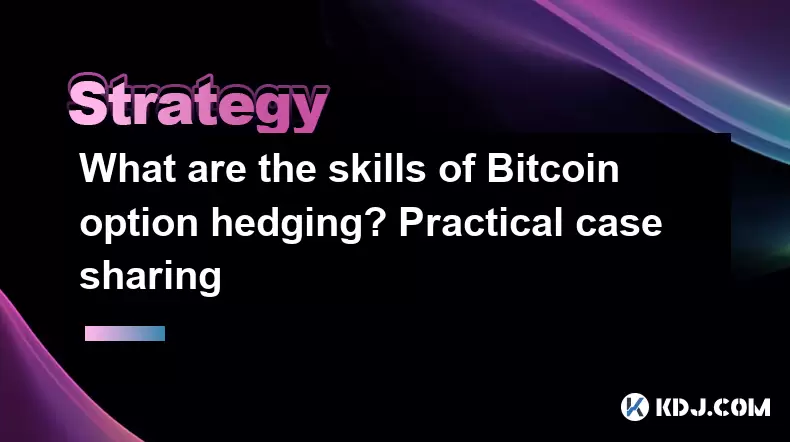
What are the skills of Bitcoin option hedging? Practical case sharing
Jun 24,2025 at 04:01pm
Understanding Bitcoin Option HedgingBitcoin option hedging is a risk management strategy used by traders and investors to protect their positions in the volatile cryptocurrency market. By using options, individuals can limit potential losses while retaining the opportunity for profit. In essence, it allows one to insulate against adverse price movements...
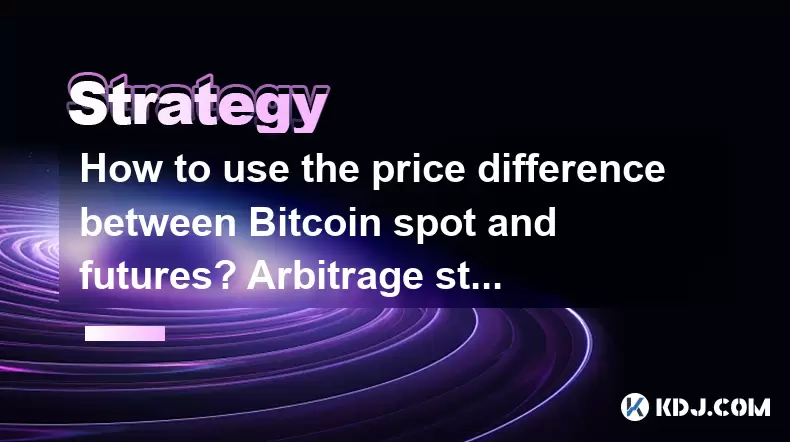
How to use the price difference between Bitcoin spot and futures? Arbitrage strategy
Jun 20,2025 at 02:56pm
Understanding Bitcoin Spot and Futures MarketsTo effectively leverage arbitrage opportunities between Bitcoin spot and futures markets, it's essential to understand the fundamental differences between these two types of markets. The spot market refers to the direct buying and selling of Bitcoin for immediate delivery at the current market price. In cont...
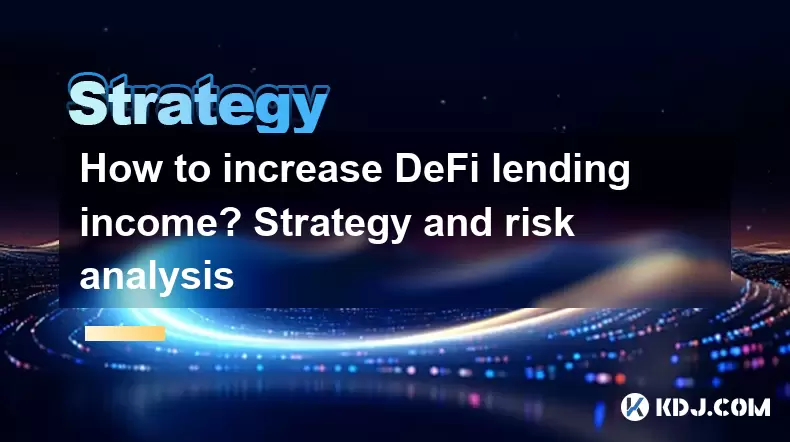
How to increase DeFi lending income? Strategy and risk analysis
Jun 24,2025 at 02:08pm
Understanding DeFi Lending and Its Income PotentialDeFi (Decentralized Finance) lending has emerged as a popular way to earn passive income in the cryptocurrency space. Unlike traditional banking systems, DeFi lending platforms allow users to lend their crypto assets directly to borrowers without intermediaries. The lenders earn interest based on the su...
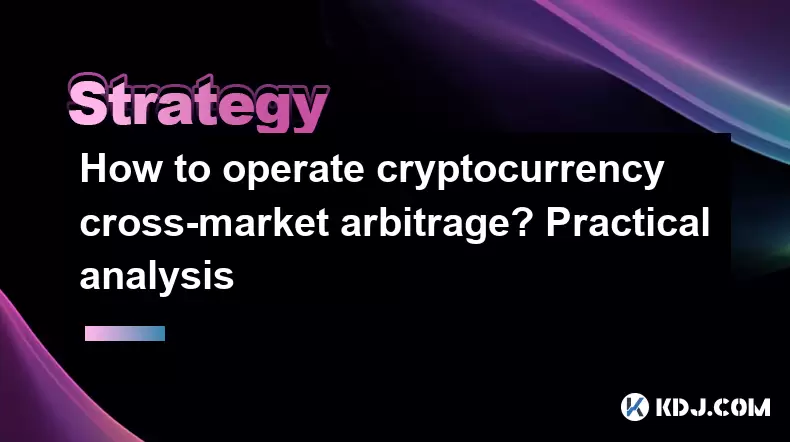
How to operate cryptocurrency cross-market arbitrage? Practical analysis
Jun 23,2025 at 04:01am
Understanding Cryptocurrency Cross-Market ArbitrageCryptocurrency cross-market arbitrage involves taking advantage of price differences for the same digital asset across different exchanges. The core idea is to buy low on one exchange and sell high on another, capturing the profit from the discrepancy. This strategy relies heavily on real-time market da...

How to make profits from high-frequency cryptocurrency trading? Sharing core skills
Jun 19,2025 at 05:07pm
Understanding High-Frequency Cryptocurrency TradingHigh-frequency trading (HFT) in the cryptocurrency market involves executing a large number of trades at extremely fast speeds, often within milliseconds. This method relies on small price discrepancies across exchanges or within a single exchange’s order book. Traders use complex algorithms and ultra-l...

What are the methods of cryptocurrency quantitative trading? Detailed analysis
Jun 22,2025 at 11:07pm
Understanding the Core of Cryptocurrency Quantitative TradingCryptocurrency quantitative trading refers to the use of mathematical models and algorithms to execute trades in the digital asset market. Unlike traditional discretionary trading, which relies heavily on human judgment, quantitative trading leverages data-driven strategies to identify profita...

What are the skills of Bitcoin option hedging? Practical case sharing
Jun 24,2025 at 04:01pm
Understanding Bitcoin Option HedgingBitcoin option hedging is a risk management strategy used by traders and investors to protect their positions in the volatile cryptocurrency market. By using options, individuals can limit potential losses while retaining the opportunity for profit. In essence, it allows one to insulate against adverse price movements...

How to use the price difference between Bitcoin spot and futures? Arbitrage strategy
Jun 20,2025 at 02:56pm
Understanding Bitcoin Spot and Futures MarketsTo effectively leverage arbitrage opportunities between Bitcoin spot and futures markets, it's essential to understand the fundamental differences between these two types of markets. The spot market refers to the direct buying and selling of Bitcoin for immediate delivery at the current market price. In cont...

How to increase DeFi lending income? Strategy and risk analysis
Jun 24,2025 at 02:08pm
Understanding DeFi Lending and Its Income PotentialDeFi (Decentralized Finance) lending has emerged as a popular way to earn passive income in the cryptocurrency space. Unlike traditional banking systems, DeFi lending platforms allow users to lend their crypto assets directly to borrowers without intermediaries. The lenders earn interest based on the su...

How to operate cryptocurrency cross-market arbitrage? Practical analysis
Jun 23,2025 at 04:01am
Understanding Cryptocurrency Cross-Market ArbitrageCryptocurrency cross-market arbitrage involves taking advantage of price differences for the same digital asset across different exchanges. The core idea is to buy low on one exchange and sell high on another, capturing the profit from the discrepancy. This strategy relies heavily on real-time market da...

How to make profits from high-frequency cryptocurrency trading? Sharing core skills
Jun 19,2025 at 05:07pm
Understanding High-Frequency Cryptocurrency TradingHigh-frequency trading (HFT) in the cryptocurrency market involves executing a large number of trades at extremely fast speeds, often within milliseconds. This method relies on small price discrepancies across exchanges or within a single exchange’s order book. Traders use complex algorithms and ultra-l...

What are the methods of cryptocurrency quantitative trading? Detailed analysis
Jun 22,2025 at 11:07pm
Understanding the Core of Cryptocurrency Quantitative TradingCryptocurrency quantitative trading refers to the use of mathematical models and algorithms to execute trades in the digital asset market. Unlike traditional discretionary trading, which relies heavily on human judgment, quantitative trading leverages data-driven strategies to identify profita...
See all articles























































































